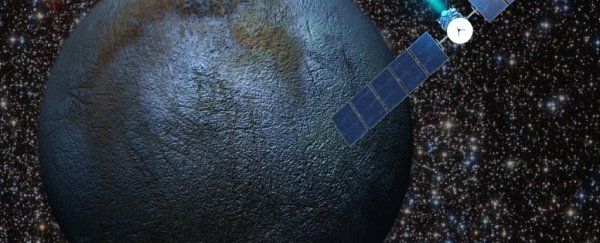NASA's Dawn probe has entered the orbit of Ceres, a dwarf planet located in the asteroid belt between Mars and Jupiter.
Researchers believe that Ceres could provide fascinating clues about the birth of the Solar System four and a half billion years ago. They're also hoping to find out whether there's a liquid ocean below the dwarf planet's rocky surface, as some models predict.
The science phase of the project will begin in April, once Dawn has gotten into the correct orbit.
"We feel exhilarated," Chris Russell, the mission's principal investigator from the University of California, Los Angeles, said in a statement to the media, after a radio signal confirmed that Dawn had been pulled into Ceres' orbit.
"We have much to do over the next year and a half, but we are now on station with ample reserves, and a robust plan to obtain our science objectives."
Like Pluto, Ceres used to be a fully-fledged planet, but it was reclassified after scientists found lots more dwarf planets in the Solar System. But some researchers believe that Dawn's mission could help reinstate Ceres, and also help determine what it really means for something to be classified as a planet.
Dawn left Earth in 2007, and spent 14 months studying the asteroid Vesta before making its way towards Ceres, which is the latest object in the asteroid belt. It's now in orbit about 61,000 km above Ceres' surface, and will gradually move closer, eventually ending up at just 375 km from the dwarf planet at its closest point.
"Both Ceres and Vesta, we believe, are proto-planets. They were on their way to forming larger planetary embryos and they were the type of object that merged to form the terrestrial planets," Carol Raymond, the deputy principal investigator from NASA's Jet Propulsion Laboratory, told BBC's Inside Science program.
"But these two stopped before they reached that evolutionary stage, and so they are essentially these intact 'time capsules' from the very beginning of our Solar System; and that's really the motivation for why Dawn is going there to explore them in detail."
The researchers already have another mystery to solve too - just last month, scientists spotted two strange, reflective patches shining on the dwarf planet.
It's a big year for space, with the New Horizons spacecraft visiting Pluto. It will be making its closest approach to the former-planet scheduled for July. Fingers crossed by the end of the year we might have two new planets to add to our Solar System.
Source: BBC
